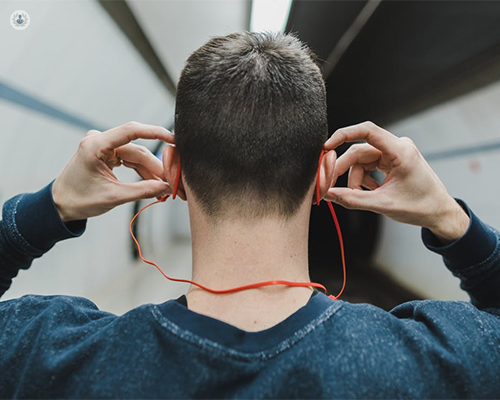BAHA implant (Bone Anchored Hearing Aid)
Mr Nish Mehta - Otolaryngology / ENT
Created on: 08-24-2021
Updated on: 12-11-2023
Edited by: Conor Lynch
What is a Bone Anchored Hearing Aid?
A Bone Anchored Hearing Aid (BAHA) is a surgically-implanted hearing device that transmits sound vibrations through the bone in the skull, directly to the inner ear containing the cochlea, bypassing the eardrum and middle ear. The BAHA system is an alternative to the conventional hearing aids that are operated by amplifying acoustic sounds that enter the ear canal, which may not always be suitable for a person’s hearing loss.

How does a BAHA implant work?
A BAHA implant consists of two parts; firstly, a titanium screw that is surgically implanted around 4mm into the skull behind the ear, that is left to integrate into the bone over a 3-4 month period. Following this, an external sound processor/bone conductor is attached to the screw. The microphone in the sound processor picks up sounds, and transmits them to the implant, which in turn vibrates the bone which acts as sound waves to the inner ear.
Who might be a candidate for a BAHA implant?
The ideal candidates for a Bone Anchored Hearing Aids are children or adults that have deafness as a result of outer or middle ear malformations, as the BAHA implant bypasses this part of the ear, going directly to the inner ear, or those with unilateral hearing loss (loss of hearing on one side). The BAHA implant can also be suitable for patients with cases of chronic ear infections. A consultant ENT specialist will be able to assist you determining whether you are an ideal candidate for a BAHA implant.
What is the difference between a BAHA implant and a cochlear implant?
The main difference between a Bone Anchored Hearing Aid and a cochlear implant, is that a BAHA implant relies on bone conduction, and so a functioning inner ear is required. A cochlear implant bypasses much of the inner ear, sending signals directly to the auditory nerve.
Can you swim or take a shower with a BAHA implant?
The processor itself is not waterproof, but an advantage of the BAHA implant is that the processor can be removed when swimming or in the shower, protecting it from possible water damage.
Seeing a specialist about a BAHA implant
If you would like an assessment about your suitability to be considered for a BAHA implant, you can request an appointment with an ENT specialist.
